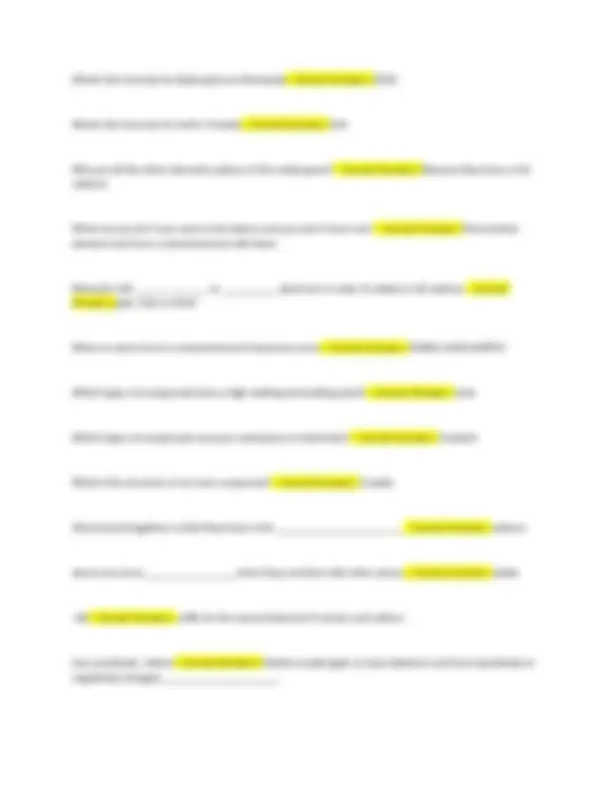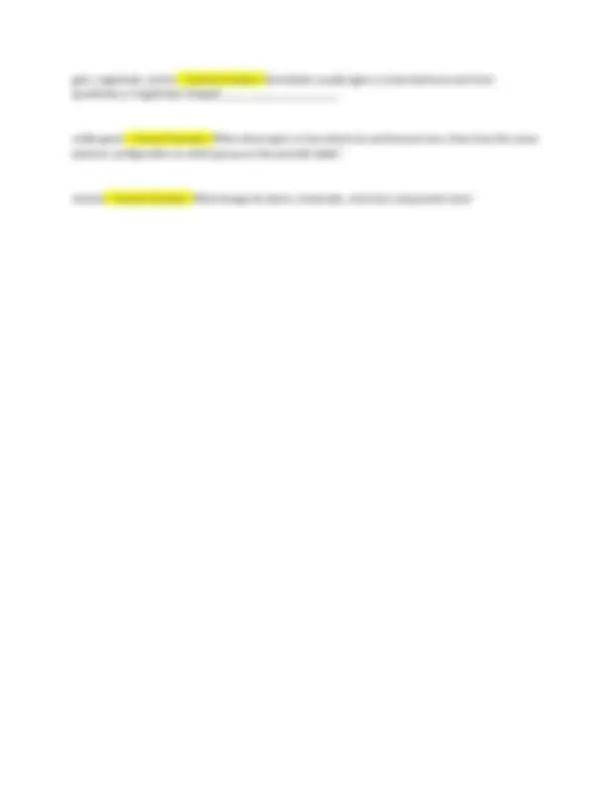




Study with the several resources on Docsity

Earn points by helping other students or get them with a premium plan


Prepare for your exams
Study with the several resources on Docsity

Earn points to download
Earn points by helping other students or get them with a premium plan
Community
Ask the community for help and clear up your study doubts
Discover the best universities in your country according to Docsity users
Free resources
Download our free guides on studying techniques, anxiety management strategies, and thesis advice from Docsity tutors
A comprehensive set of questions and answers covering ionic and covalent bonds in physical science. it's ideal for students preparing for exams, offering a valuable review of key concepts such as the octet rule, ionic and covalent bonding, naming conventions, and formula writing. The questions test understanding of fundamental principles and their application to various chemical compounds.
Typology: Exams
1 / 4

This page cannot be seen from the preview
Don't miss anything!



Octet Rule - Correct Answers: Atoms gain or lose electrons to get a full outermost energy level. Metals - Correct Answers: They normally lose electrons during chemical reactions. Usually, form positive ions. Non-metals - Correct Answers: They normally gain electrons during chemical reactions. Usually form negative ions. Ion - Correct Answers: An atom that has an electrical charge. Anion - Correct Answers: An ion with a negative charge. Formed by gaining electrons Cation - Correct Answers: An ion with a positive charge. Formed by losing electrons. Chemical bonding - Correct Answers: The force that holds atoms together. Ionic bond - Correct Answers: a chemical bond between oppositely charged ions - metal bonded to non metal Electron dot diagram (aka Lewis structures) - Correct Answers: A shorthand representation of the valence electrons in an atom. How to write the formula for an ionic compound: - Correct Answers: write the symbol for your metal first, then your nonmetal second then kriss kross the signs
Naming ionic compounds - Correct Answers: The name of the metal comes first, followed by the name of the nonmetal, changing the nonmetal's ending to "ide". ionic compounds - Correct Answers: form salts Ionic compounds will conduct electricity - Correct Answers: when dissolved in a liquid or when they are melted valence electrons - Correct Answers: outermost electrons which will determine bonding. covalent bond - Correct Answers: a chemical bond that results from the sharing of electrons - non metal bonded to non metal diatomic molecule - Correct Answers: elements that covalently bond with themselves to form a molecule, I Have No Bright or Clever Friends; I2, H2, N2, Br2, Cl2, F What's the formula for Sodium oxide? - Correct Answers: Na2O What's the formula for Magnesium Bromide - Correct Answers: MgBr What's the formula for Potassium Chloride - Correct Answers: KCl What's the formula for Dinitrogen Tetrasulfide - Correct Answers: N2S What's the formula for Nitrogen Triiodide - Correct Answers: NI What's the formula for carbon monoxide? - Correct Answers: CO What's the formula for Carbon Tetrachloride - Correct Answers: CCl
gain, negatively, anions - Correct Answers: Nonmetals usually (gain or lose) electrons and form (positively or negatively) charged _____________________. noble gases - Correct Answers: When atoms gain or lose electrons and become ions, they have the same electron configuration as which group on the periodic table? neutral - Correct Answers: What charge do atoms, molecules, and ionic compounds have?